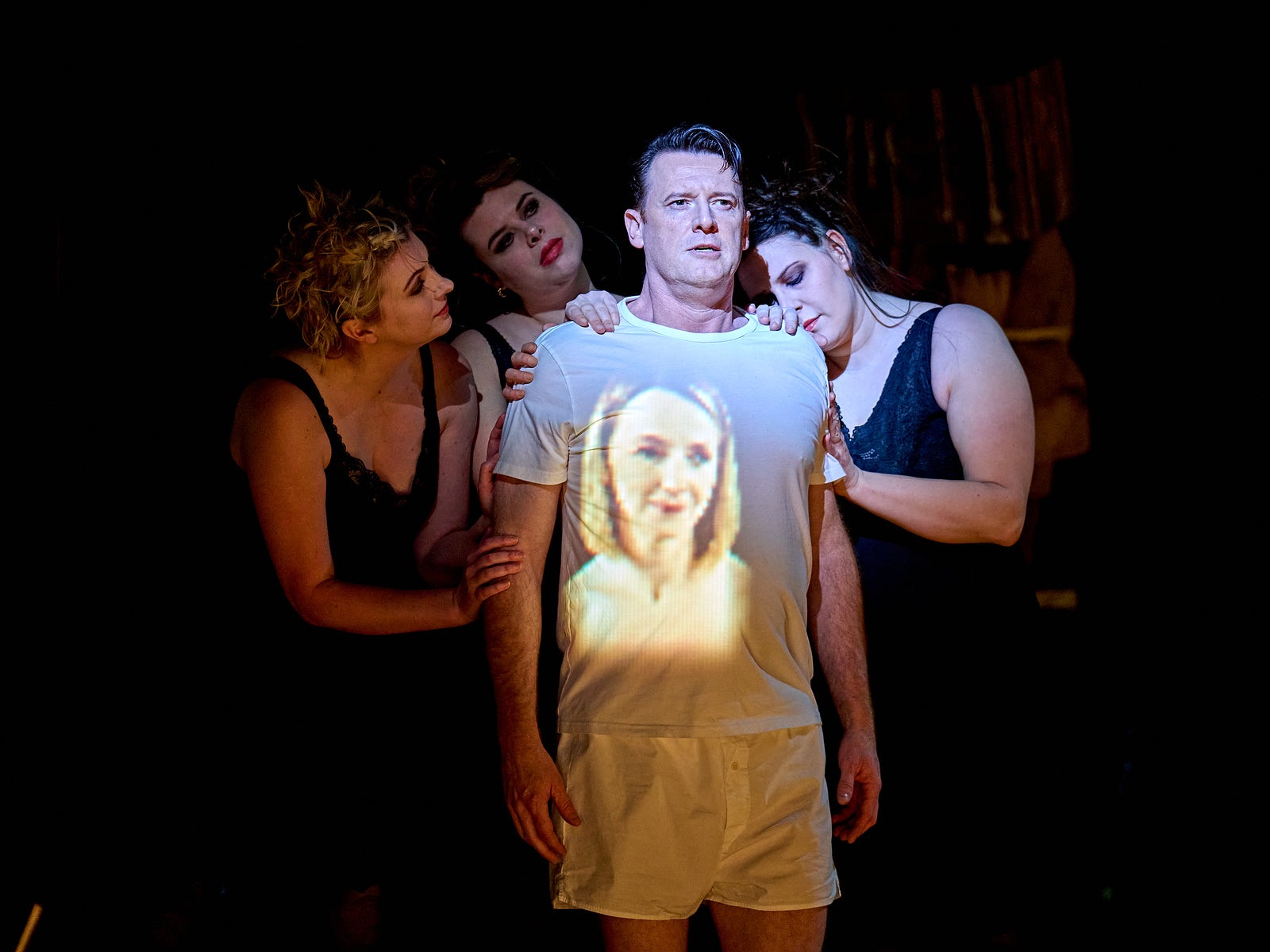The Magic Flute review: The ENO’s radical reimagining of Mozart’s opera has lost none of its power
English National Opera joins forces with theatre company Complicite for a mesmerising spin on an old classic

Watching the premiere of this production in 2012, the audience just sat there open-mouthed with surprise and delight. Never had a Mozart opera – or any opera – been purveyed in this way, upside down and inside out, so that one never knew what was reality, what was conjured up by video projections, and what was the result of absurdly simple props artfully deployed.
A flock of white doves? No, just the cast making magic with sheets of A4 paper. But such was the suggestive power of this collaboration between English National Opera and international theatre company Complicite that one unquestioningly bought into their fantasy.
Over the past decade, other directors have followed this lead – most notably Yaël Farber, with her searing production of King Lear currently playing at the Almeida Theatre. But now that the ENO/Complicite Flute is in revival, it’s worth recalling the thinking behind it.
Complicite’s director Simon McBurney and designer Michael Levine have harnessed 21st-century digital technology to recreate the pantomime illusionism that the Flute’s original 18th-century audience must have enjoyed; their approach to the stage is so malleable that you wonder where the walls are, and where the floor is. And they’ve built in Shakespearean echoes, with Sarastro being an avatar of Prospero, Tamino of Ferdinand, Pamina of Miranda, and Monostatos as an avatar of Caliban. In their staging, everything normally hidden is visible, while what we hear is a fantastical amalgam of live music and everyday “found” sounds.
The good news is that with a first-rate cast and brilliant direction, this show has lost none of its power to amuse, shock, and delight. Because the effects are so amazing, the progress of the plot is sometimes brought to a temporary halt but the remarkable thing is that, under Erina Yashima’s direction from the pit, the momentum of Mozart’s richly jewelled score is in no way weakened.
I say “from the pit” but what makes this production unique from the off is that its orchestra is on stage too, and level with the rest of us. It’s a lovely touch to have the orchestra’s lead flautist come up on stage to accompany Tamino in his search for love. Add to that the fact that Papageno and Papagena treat the stalls as part of their acting space, and you find the invisible “fourth wall” (which usually divides performers and audience) has gone. Here we really are all in it together.

Sarah Tynan and Norman Reinhardt make a fine pairing as Pamina and Tamino, with Reinhardt bringing graceful persuasiveness to his pivotal role; Rainelle Krause’s Queen of the Night – convincingly presented as a crotchety old dame – sings her stratospherically high part with laser-like accuracy. David Stout, meanwhile, is the funniest and most irresistible Papageno I have ever seen, with Alexandra Oomens the most bewitching Papagena.
John Relyea’s basso profundo Sarastro is a marvel of relaxed authority, and it falls to him to make the short masonic speech which keys this production into the real world. “Friends, we are in a time of great danger…” – yes indeed, both in Mozart’s world and our own.
ENO’s various tribulations, some imposed upon it and some self-imposed, just go on and on. Yet no other opera company in the world could have brought off this wonderful show with such apparent ease.
At the London Coliseum until 31 March
Join our commenting forum
Join thought-provoking conversations, follow other Independent readers and see their replies
Comments